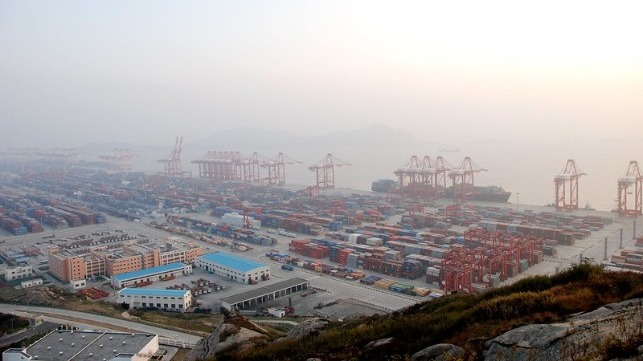Why High Container Rates are Likely to Persist

Last month, The Maritime Executive reported on the explosive rise in container rates across major global trade routes. The result is an increase in shipping costs, posing an additional economic burden for a world that is already struggling to recover from a pandemic. The silver lining of this is enjoyed by ocean carriers, who are posting record high profits.
Is there a likelihood that the situation will normalize in short and long-term? Maybe not, according to Jan Hoffman, Chief of Trade Logistics Branch at UNCTAD.
In its wake, Covid-19 pandemic has caused immense trade restrictions along the global supply chain, as felt at Yantian, Los Angeles and many other ports. The terminals slow-down is causing inefficiencies along intermodal connections, making containers spend about 20 percent longer in the system for each shipment. As long as the pandemic is not contained, he believes that the situation will get even worse, driving freight rates ever higher.
Additionally, Hoffman observes that for more than a decade, carriers have been on the receiving end of very low freight rates. “To reduce unit costs, carriers invested in ever bigger and newer ships, but the problem is that older ships were not scrapped - and the overcapacity remained,” Hoffman wrote in a blog posted to his LinkedIn account. That said, the race to build bigger vessels (for economies of scale) will likely arrive at the maximum possible vessel size in the near future, Hoffman noted.
Over the years the shipping industry has been experiencing consolidation, leading to fewer carriers than before. Thus, “competition and choices for shippers went down while the options to manage capacities and port calls has improved, from carriers’ perspective,” notes Hoffman. This leaves the carriers in an advantageous position to dictate freight rates compared to shippers.
Hoffman also feels that the ongoing decarbonization efforts may lead to slightly higher freight rates. A recent analysis by UNCTAD on this subject concluded that IMO’s initial strategy on reduction of greenhouse gas emissions - such as speed limits - though having an immediate positive impact on the industry’s carbon footprint could also lead to higher freight rates. Nevertheless, such an increase will be very small compared to the current volatility of rates caused by market forces. Until the industry fully transitions into cleaner fuels, we cannot rule out the effects of decarbonization on rates.
An announcement on Friday by Hapag-Lloyd that it would suspend all imports into East Malaysian ports is a testament that the peak for freight rates is not yet reached. Hapag-Lloyd stated that feeder space limitations led its decision.
“This in turn is yet another indication of the overall shortage of container vessels available in the market. And when there are not sufficient vessels in the market, some routes will end up short on capacity,” commented Vespucci Maritime CEO Lars Jensen, who was quick to clarify that his sentiments did not intend to establish a causal relationship to Hapag-Lloyd’s announcement.
These operational bottlenecks ultimately lead to high freight rates, similar to the shortage of containers observed during Covid-19 pandemic.
Top image: Shanghai Yangshan (Bert Van Dijk / CC BY NC SA 2.0)
The opinions expressed herein are the author's and not necessarily those of The Maritime Executive.
